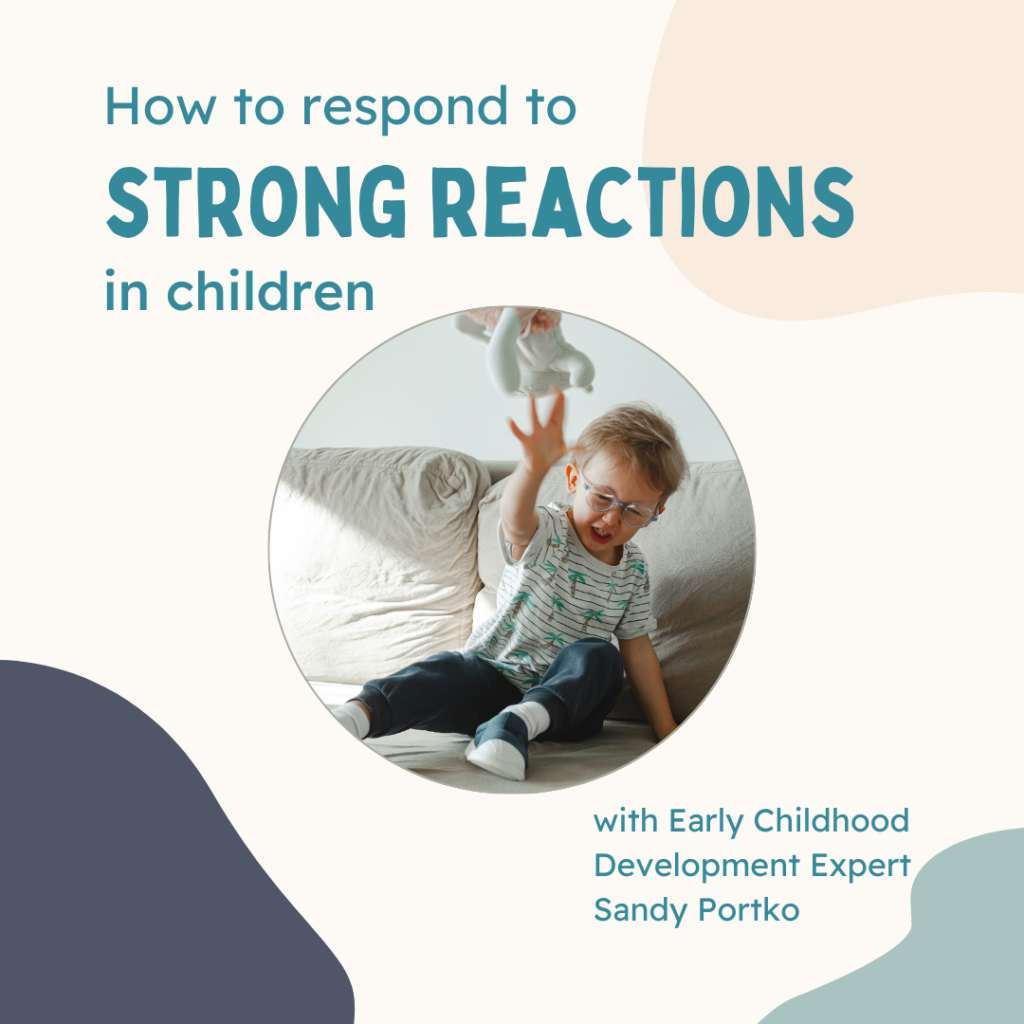No person is born with the ability to easily transition from one place or activity to another; for all of us, it’s a learned skill often developed early on in life. In these early years, some children may be able to cope well with changes, whereas others have big, emotional, and sometimes destructive reactions. These changes can be big, like moving to a new town or entering a new grade. Most of the time, these changes are small—or at least they seem small to adults. Things like ending playtime, asking them to brush their teeth or use the bathroom before bed, or telling them no when they ask to have something at the store can cause a child to have a major meltdown.
Not to fear, our resident early childhood development expert Sandy Portko is here! This is what she had to say about handling strong reactions from young children:
Their biology and environment may be a factor
Most healthy, full-term pregnancies result in infants who follow similar general patterns of development which provide some ideas of what is typical at different ages. However, a small percentage of healthy infants may display differences from their same-age peers. Some of these children respond more intensely to slight changes that others don’t seem to even notice. Some highly reactive infants and children react to changes in all five senses while others may only react intensely to two or three. These children are born with highly responsive nervous systems that detect tiny changes and take longer to adapt to them.
Researchers have not yet identified causes, although some findings suggest that women with continual high levels of cortisol from chronic stress during pregnancy tend to have babies who react intensely to subtle changes. Dealing with intense reactors can be frustrating and exhausting for parents and caregivers, especially if they don’t know these are biological responses rather than chosen actions.
Validate their experience
Before children are verbal, caregivers must be alert detectives to identify the source of the distress. Removing or greatly reducing the source of the intense reaction is the fastest intervention caregivers can make. As children grow older, they can identify the source with help from adults in their environment. If they are with adults who dismiss their experience by saying “don’t be such a baby,” children may react to unpleasant or painful events with a public meltdown or a complete withdrawal.
Focus on identifying the source of the stress
Such behaviors usually result in labels of “difficult,” “oppositional,” “spoiled,” or even “defiant” by those who don’t understand what’s happening. Unfortunately, those individuals often recommend discipline for the behaviors instead of searching for the reason. Instead, these children need help first calming their emotions, and then identifying the source of the distress. Their feelings of distress at not being understood must be validated; only then will they be open to exploring ways of dealing with the unpleasant event the next time they encounter it.
Consider sensory sensitivities
The intense reactions to events can take many forms. For example, a child who refuses certain foods may not have the language to explain what it is about the food she doesn’t like. Caregivers can help by asking things like “does the food feel too rough when you eat it?” to determine if she is highly sensitive to this type of texture. If she is, ask what feels smooth in her mouth and if she would try it again if it can be made smoother. If it tastes too strong or sharp, maybe try ways to prepare it in blander form.
Some children respond strongly to different kinds of tactile (touch) sensations. Some, as babies, may prefer firmer pats on the back while being burped. Others may like being held upright rather than being cradled. Certain fabrics may feel irritating to some babies, even though many others find them soft. This can carry over into childhood and even adulthood for some. Caregivers need to be sensitive to these possibilities and open to exploring them when dealing with intense reactions to typical situations.
What to do in the moment
In summary, when dealing with intense reactions,
-
Reduce the stimuli: if possible, dim the lights, turn off sounds from TV or radio, and/or move the child a short distance from other people.
-
Hold the child closely.
-
Talk softly with a soothing voice, e.g., ‘it’s okay,’ ‘it’s alright,’
-
When child stops crying, ask softly about what happened.
-
If the child is too upset to talk, keep soothing and tell the child to talk when ready.
-
Depending on the child, either keep soothing talk going or sit quietly.
-
Validate the child’s feelings, then begin problem-solving different responses with the child. Ask questions like, ‘what should we do now?’ or “what can we do differently next time?’
Thanks, Sandy! We are so grateful to have her expert insight for difficult situations like this. Like Sandy said, handling strong reactions from children is something many parents will experience at some point or another, and it can be very challenging and exhausting for everyone involved. Remember that you have a lot more experience handling these stressors and you are just the hero your child needs to help them through these big feelings!
Thanks for reading!
We encourage you to use these tips and let us know how it goes! Feel free to send us a message on social media or tag us in your posts with @familyfutures on Instagram or Facebook!
